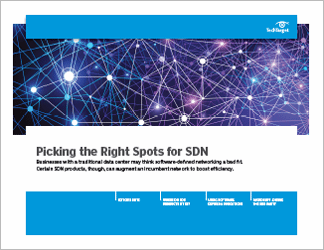Access your Pro+ Content below.
A closer look at SDN vs. traditional networking

Software-defined networking, or SDN, allows network engineers and admins to respond quickly to changing business environments. When it comes to SDN vs. traditional networking, the latter is often viewed separately from SDN. While a typical data center may not seem appropriate for SDN, software-defined technologies can be used effectively and efficiently in a harmonious relationship with more traditional networking. With the right plan, an IT team can create a single, unified infrastructure.
This three-part guide covers the latest SDN developments, weighing the SDN pros and cons, and looks specifically at how SDN options can inform decisions in real-time situations. While there are disadvantages of software-defined networking, SDN products can combine the power of big data analytics and traditional networking, allowing them to monitor traffic flows and network latency. There are also software-defined applications, which perform tasks in a software-defined networking architecture and can create flexibility, efficiency and resiliency for data centers. And the SDN enterprise market will only grow when Microsoft debuts its Azure Stack in conjunction with Windows Server 2016.
Table Of Contents
- Where do SDN products fit in?
- Using software-defined applications
- Microsoft joining the SDN party




